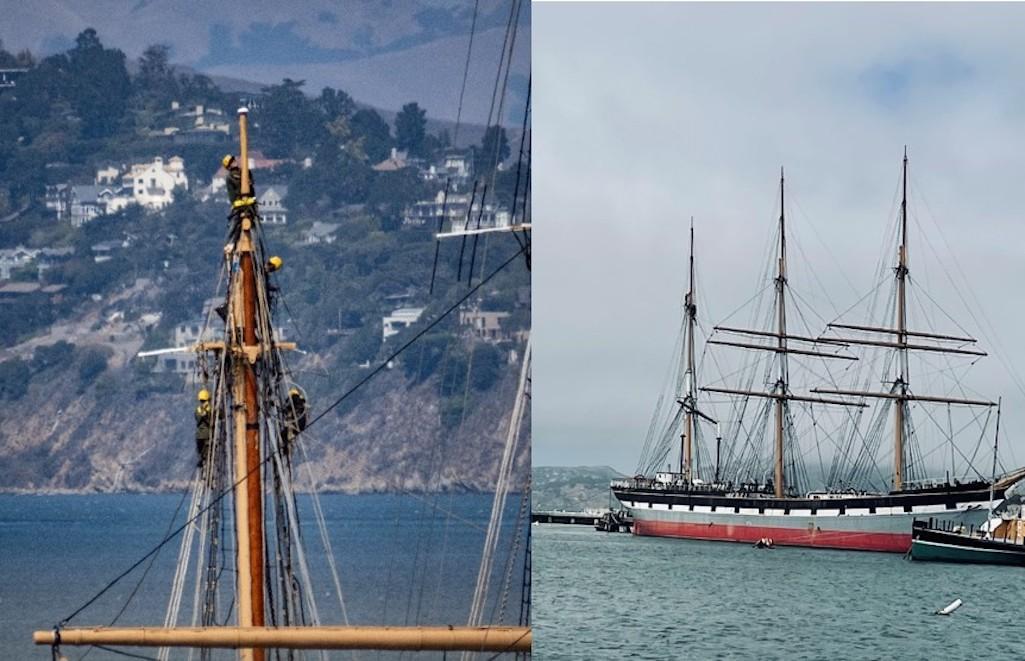
NPS rigging crew aloft the mizzen mast of Balclutha; Balclutha berthed at Hyde Street Pier with all new topgallant masts/NPS, Todd Bloch & Adrian McCullough
After going nearly nine years without its topgallant masts, the three-masted Balclutha at San Francisco Maritime National Historical Park has three new masts in place. National Park Service crews on September 14 raised the third and final topgallant mast on the 1886 National Historic Landmark ship.
Over the last two months, the park’s rigging crew, shipwrights, staff, and volunteers have worked together to install three new topgallant masts with new standing rigging, monumental steps towards achieving all components necessary to become a full-rigged ship again.
"Swaying of the new masts" was a major undertaking that required the time, training, skills, and expertise of a team of experienced riggers, shipwrights, and volunteers. “We couldn’t have done it without the hard work and dedication of our crew and volunteers,” said Josh Payne, the park's historic ships rigger.
Berthed at Hyde Street Pier in San Francisco, Balclutha was built in 1886 in Glasgow, Scotland, and sailed the world for many years, carrying cargo and passengers. It was acquired by the San Francisco Maritime Museum in 1954, transferred to the National Park Service in 1978, and has been a popular tourist destination ever since. The ship was designated a National Historic Landmark in 1985.
Balclutha is continually undergoing comprehensive restoration and preservation work to maintain its historically accurate appearance and condition.
“Now that the fore, main, and mizzen t’gallant masts are swayed aloft, next will be crossing the yards,” said Payne.



Comments
For those as unfamiliar with nomenclature as I, a topgallant mast is a section of a mast. According to https://en.wikipedia.org/wiki/Mast_(sailing), "From the 16th century, vessels were often built of a size requiring masts taller and thicker than from single tree trunks. On these larger vessels, to achieve the required height, the masts were built from up to four sections (also called masts). From lowest to highest, these were called: lower, top, topgallant, and royal masts." I do wonder how sailors in the age of sail (and the crew and volunteers of Balclutha) hoisted the upper masts.
Many thanks for the nautical explanation, Will. We dropped the ball on that one.